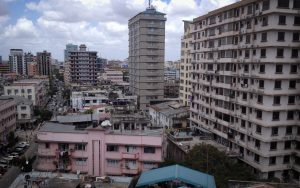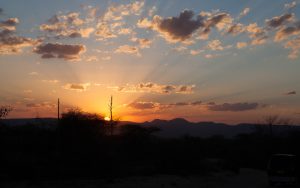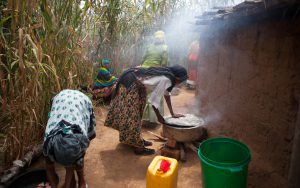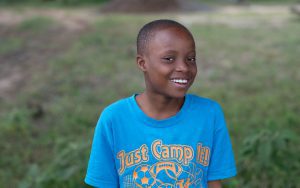The tower that would hold the two water tanks and solar panels went up as handmade bricks were handed one-by-one up a ladder. While the men worked, young boys who were tending to their goats passed by, ladies offered us fresh hot milk from their cows with a spoonful of sugar, and children—on their way home after school—stood with us watching the structure go up.
Each day, the tower grew a little bit bigger.
Pipes also needed to be laid inside trenches that would bring water to seven distribution points across Iyoli village, which meant that 10km of trenches, 90cm high and 50cm wide, needed to be dug. People from all over Iyoli volunteered to help dig.
Multiple teams of five were dispersed around Iyoli village and together they dug. Young and old. Men and women—all were digging. From the primary and secondary school, to the village center, the market, and the medical center—teams dug. Through fields of corn and bush and trees—teams dug. Through homes and streets—teams dug. While children played and people watched, the teams continued to dig.
As the sun glared down on us, people grew more and more tired, and by the end of the day, there were still many kilometres, as well as weeks of work, left to go.
The tower for the water tank was still under construction, too, but once it was completed, gravity and pressure was going to be pushing water through the pipes hidden in these trenches, and eventually—once the ground had settled—no one would even know that they were there. Running water was going to feel like magic, but these teams that were currently tossing aside shovel after shovel full of earth would know that it was their hard work that made it all possible.


















































